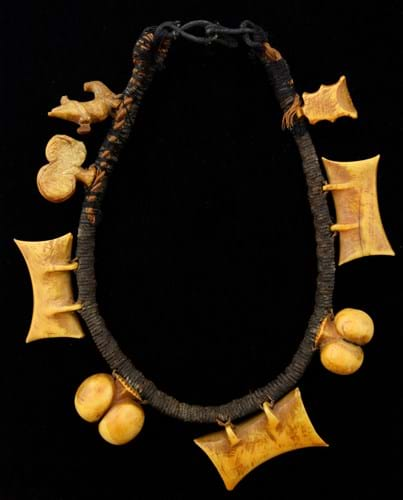
Although described simply as an ‘ethnic carved bone and antler necklace’, this house clearance lot was identified by specialists as a rare survivor from the southern Cook Islands.
Auctioneer Chris Ewbank told ATG: “It was a complete sleeper. The day before the sale we had been tipped a wink that it could make £10,000 but no one was expecting this.”
There was bidding in the room up to £50,000 before two bidders, an Australian and the European dealer, took up the competition. Ewbank later spoke to the vendor, who told him he had considered taking it to the car boot fair across the A3 with a £15 price tag.
The chain of islands extending through the Austral group to Mangaia in the southern Cook Islands are known for producing some of the most elegant of all Pacific necklaces. Many were made in the 19th century for high-status individuals from marine ivory (probably sperm whale teeth) suspended from woven coconut fibres or sennit bound with human hair.
The precise meaning of the carved amulets is unknown but it is possible those similar to testicles performed a fertility function.
A similar necklace or tabua in the British Museum was bought in 1911 from the London Missionary Society in Mangaia. Another in the Te Papa Tongarewa, Wellington, was acquired in 1948 when the New Zealand government bought the Māori and Pacific collection of the London dealer WO Oldman for about £40,000.
Sperm whales were very occasionally found stranded on beaches in the Pacific islands with their teeth highly valued by the indigenous communities well before the advent of commercial whaling.





